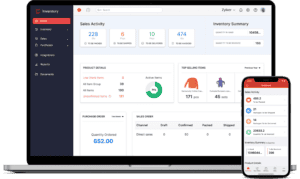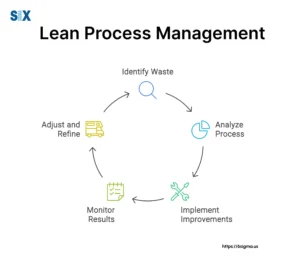Mastering Inventory Planning for Optimized Business Operations
Efficient inventory planning ensures smooth operations, minimizes costs, and keeps your business well-prepared to meet customer demand.
Introduction:
Inventory planning is the backbone of any successful business operation, whether you’re in retail, manufacturing, or e-commerce. By forecasting demand accurately and managing stock levels efficiently, businesses can avoid overstocking, understocking, and costly delays. This article explores essential strategies for mastering inventory planning and the best tools to help streamline the process.
What is Inventory Planning?
Inventory planning involves predicting future demand for products and determining the appropriate stock levels to meet that demand. The goal is to ensure that a business has enough inventory on hand to fulfill orders while avoiding excess stock that ties up capital or leads to obsolescence.
Key Benefits of Effective Inventory Planning:
- Improved Cash Flow: By only purchasing necessary stock, businesses free up capital for other operational needs.
- Minimized Stockouts and Overstock: Prevents the loss of sales due to insufficient stock and reduces the risk of dead stock.
- Optimized Storage Costs: Maintaining the right stock levels reduces warehousing costs, leading to more efficient use of storage space.
Essential Steps in Inventory Planning
Successful inventory planning is more than just tracking stock levels; it requires forecasting, tracking, and managing multiple variables. Here’s how businesses can optimize their inventory planning processes:
1. Forecasting Demand
The first step in inventory planning is understanding your future demand. Analyzing historical sales data, market trends, and seasonal changes allows businesses to predict the quantity of stock they’ll need. Tools like Zoho Inventory and Cin7 offer advanced demand forecasting features, helping businesses make data-driven decisions.
2. Setting Reorder Points
Reorder points ensure that you order more stock before running out. A good inventory planning system automatically calculates reorder points based on current stock levels, lead times, and historical demand. Katana Cloud Inventory provides customizable reorder point settings, ensuring that businesses never face stockouts.
3. Safety Stock Levels
Safety stock is the extra inventory kept on hand to protect against unexpected demand spikes or supplier delays. By factoring in potential disruptions and variability in demand, businesses can set appropriate safety stock levels. Using a system like Fishbowl helps ensure that safety stock levels are optimized without overstocking.
4. Lead Time Management
Lead times—the amount of time it takes for an order to be delivered after it is placed—play a crucial role in inventory planning. Businesses should account for supplier lead times when calculating reorder points to avoid running out of stock during delivery delays. Tools like TradeGecko offer real-time tracking of lead times, helping to maintain smooth operations.
5. Inventory Categorization
Not all inventory is equal in value or demand. By categorizing inventory into groups (e.g., A, B, C classification based on sales volume and value), businesses can focus their efforts on high-priority stock items. This helps ensure that top-selling items are always available while minimizing investment in lower-priority items.
Inventory Planning Tools to Enhance Efficiency
Managing inventory manually is time-consuming and prone to errors. Thankfully, there are powerful tools designed to simplify the process and make inventory planning more efficient:
1. Zoho Inventory
Zoho Inventory provides a comprehensive solution for managing stock levels, tracking sales orders, and forecasting future demand. Its seamless integration with other Zoho applications ensures that inventory data is connected to financial, CRM, and sales systems, creating a unified business ecosystem.
2. Cin7
Cin7 is a cloud-based inventory management software that automates stock levels, order processing, and demand forecasting. Its multi-location management feature is ideal for businesses operating across multiple warehouses or retail outlets, providing a complete overview of inventory across all locations.
3. Katana Cloud Inventory
Katana offers a real-time overview of manufacturing and inventory levels, helping businesses streamline their production and purchasing processes. Its automated reorder point settings ensure that stock levels remain optimized, allowing businesses to focus on other aspects of operations.
4. Fishbowl
Fishbowl is a manufacturing and warehouse management tool that helps businesses track stock levels, set safety stock levels, and manage multiple warehouses. It provides advanced reporting features to give businesses the insights they need for accurate inventory planning.
5. TradeGecko (QuickBooks Commerce)
Now part of QuickBooks Commerce, TradeGecko simplifies inventory tracking and demand forecasting. Its powerful automation features reduce manual inventory tracking and help businesses plan for seasonal or unexpected demand changes.
Common Challenges in Inventory Planning and How to Overcome Them
Even with the right tools, inventory planning can pose challenges. Here’s how to overcome common issues:
1. Inaccurate Forecasting
Forecasting can be tricky, especially when market trends shift unexpectedly. To minimize errors, use advanced forecasting tools like Cin7 or Zoho Inventory that analyze historical data and trends to generate accurate demand predictions.
2. Supplier Delays
Unreliable suppliers can lead to inventory shortages. Establishing a reliable supplier network and using tools like Fishbowl to track supplier lead times helps mitigate these risks by allowing businesses to adjust reorder points accordingly.
3. Overstocking
Overstocking can tie up valuable capital and increase storage costs. By setting accurate reorder points and monitoring demand in real time, businesses can avoid unnecessary stock build-ups. Using automated reorder systems like Katana Cloud Inventory helps maintain optimal stock levels.
4. Miscommunication Across Teams
Inventory planning requires close collaboration between purchasing, sales, and operations teams. Using a unified inventory management tool ensures that all departments have access to the same data, minimizing miscommunication and errors.
FAQs
What is inventory planning?
Inventory planning is the process of predicting future demand and managing stock levels to ensure a business has the right products available at the right time, avoiding stockouts and overstocking.
Why is inventory planning important?
Effective inventory planning helps businesses optimize their stock levels, reduce costs, avoid stockouts, and improve cash flow by only purchasing what’s necessary to meet demand.
How can I improve my inventory planning process?
You can improve your inventory planning process by using tools like Zoho Inventory or Cin7 for accurate demand forecasting, setting proper reorder points, managing lead times, and categorizing inventory effectively.
What are the best inventory planning tools?
Top inventory planning tools include Zoho Inventory, Cin7, Katana Cloud Inventory, Fishbowl, and TradeGecko. These tools help businesses automate stock tracking, set reorder points, and forecast demand.
How do I prevent overstocking?
To prevent overstocking, use automated inventory management systems that calculate reorder points based on real-time data and historical trends. Regularly review inventory levels and adjust safety stock as necessary.
Top Tools to Simplify and Scale Your Inventory Planning
- Zoho Inventory – Comprehensive stock management, demand forecasting, and seamless integration with other Zoho tools for complete business oversight.
- Cin7 – Offers automated stock level tracking, multi-location management, and accurate demand forecasting to help businesses maintain optimal inventory.
- Katana Cloud Inventory – Provides real-time inventory visibility and automated reorder point settings to keep stock levels optimized without manual intervention.
- Fishbowl – Advanced reporting and tracking features, with multi-warehouse management, ideal for manufacturers and wholesalers looking to streamline inventory processes.
- TradeGecko (QuickBooks Commerce) – Simplifies inventory tracking, forecasting, and supplier management with powerful automation features.
Keywords: inventory planning, demand forecasting, stock management, reorder points, safety stock, supply chain management, inventory optimization, automated inventory tools









